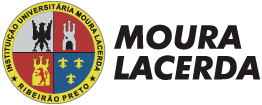DNA purification is one of the steps in the process of preparing samples. It removes salts and enzymes from the lysed samples, or PCR products, before the cloning and sequencing process. It also removes unwanted PCR-induced artefacts like primer dimers as well as nucleotides that have not been integrated. DNA purification is a crucial step in molecular biology that requires careful planning to ensure high-quality, reliable results.
There are numerous approaches to eliminating DNA. Traditional DNA isolation methods require various steps like leukocyte http://www.mpsciences.com/2021/04/15/gene-synthesis-and-transcription-processes/ isolation or red blood cell lysis in order to remove heme proteins that inhibit the PCR reaction, deproteinization, the treatment of RNAse. These include ethanol and isopropanol precipitation. Finally, there is DNA elution. The majority of these protocols require specially designed equipment, like an electrophoresis device and a biosafety cabinet due to the dangers of intercalating dyes in the electrophoresis gel.
Other methods of DNA purification use spin columns or 96-well filter plates to eliminate contaminated particles by adsorbing them to the surface of the column or plate. These techniques can be very time-consuming especially when you have a large number of samples or if the columns need to be filled manually.
Dipsticks reduce the number of sample processing steps from six to three. They bind nucleic acids with the cellulose-based waxy material and then release them when in contact with water. This method is particularly beneficial for low-resource settings like remote sites and teaching labs. Its simplicity (30 s per sample) is a great fit for molecular diagnostic tests such as those for disease detection and genotype screening.



